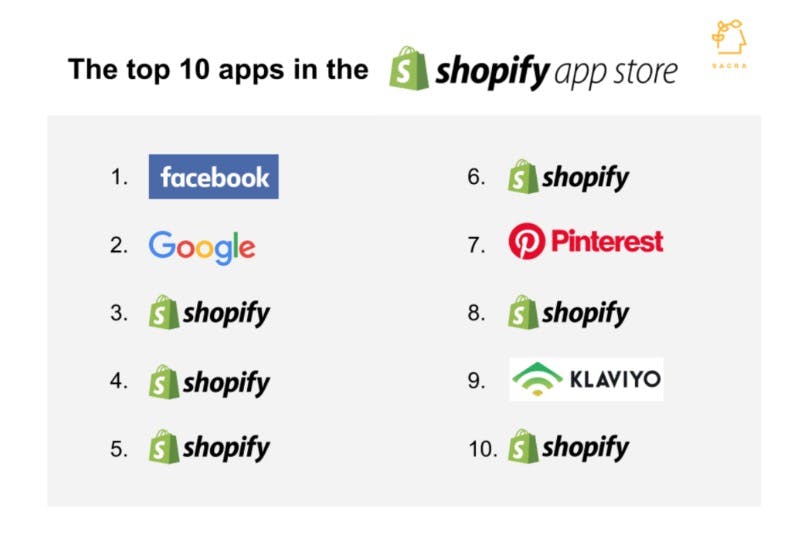Hi everyone 👋
Sign Up Today!
To get these right in your inbox
Shopify armed the rebels against Amazon through an unholy alliance with the big social platforms that gave merchants a way to rent audiences and bring them to their stores. 22% of all Shopify store traffic, and almost $9B in sales a year, come from Facebook alone.
But now, with Apple breaking ad tracking in iOS, which Facebook expects will cost them $10B in 2022, Shopify’s app store needs to evolve to give merchants the tools to own their own stores and their own audiences.

The problem is that the 20,000 unique ecommerce software tools out there don't cover 80% of merchant workflows—things like custom rewards and gifting flows to fulfillment logic—and integrators like Zapier don't have the full endpoint access necessary to bridge all the gaps.
To learn more about the problems merchants are facing in 2022 and how companies are looking to empower them, we talked to Sara Du, the CEO and co-founder at Alloy, which is building a verticalized Zapier for ecommerce. Key takeaways from our interview:
I think it's really good that Shopify opens up their APIs for the community. But ultimately it is for the purpose of extending the functionality of their ecommerce platform. And the risk that a lot of apps see is, what if they just copy us? There have been times where Shopify edges into someone's territory, so it’s increasingly a concern. (link)
Most apps just aren’t well-positioned [to be a single source of truth] because they have a set view for what the data model for a customer object or order object should look like. For example, a reviews app has a different view of customer data attributes than an ecommerce platform might. Even Shopify, their UI has opinions on what data is more important, and everything else is dumped into custom attribute key-pairs. (link)
The market has expanded a lot these past two years, and as a result, it almost feels like we are horizontal. We can dig into the marketing use cases, supply chain, customer support, all of that. For each, you can get deeper and deeper - with just marketing, you can do retention, growth, influencer, etc. There’s a ton of automations just in influencer management and gifting. It gets pretty crazy. In the long term, the goal is we're building more data tools for merchants -- now that we have the core infrastructure layer -- so we'll be a horizontal platform within this space. (link)
For more from our interview with Sara, check out the full transcript here.
Q&A with David Peterson, partner at Angular Ventures
On Tuesday (2/22) at 9am PT/12pm ET, join us for a conversation with David Peterson, partner at Angular Ventures, to talk about going from startup operator to investor.
David joined Airtable as an early employee in 2017, building the company’s first growth team and leading partnerships. We interviewed David about his time at Airtable leading growth, particularly on Airtable’s PLG sales motion.
In 2021, he left Airtable to join Angular Ventures, a small, upstart venture fund based in London.
Zapier: The $7B Netflix of productivity
In case you missed it, check out our report on Zapier: The $7B Netflix of Productivity.
Zapier built a $140M ARR business on just $1.4M raised by keying in on two massively consequential trends for the internet: webhooks and Google Search.
Their website gets 6M+ views per month (more than Deadspin or Teen Vogue) thanks to their formidable growth engine, powered by hundreds of programmatically generated SEO landing pages.
And with their acquisition of Makerpad last March, Zapier’s now moving to harness that top-of-funnel distribution into building the end-to-end no-code platform.


